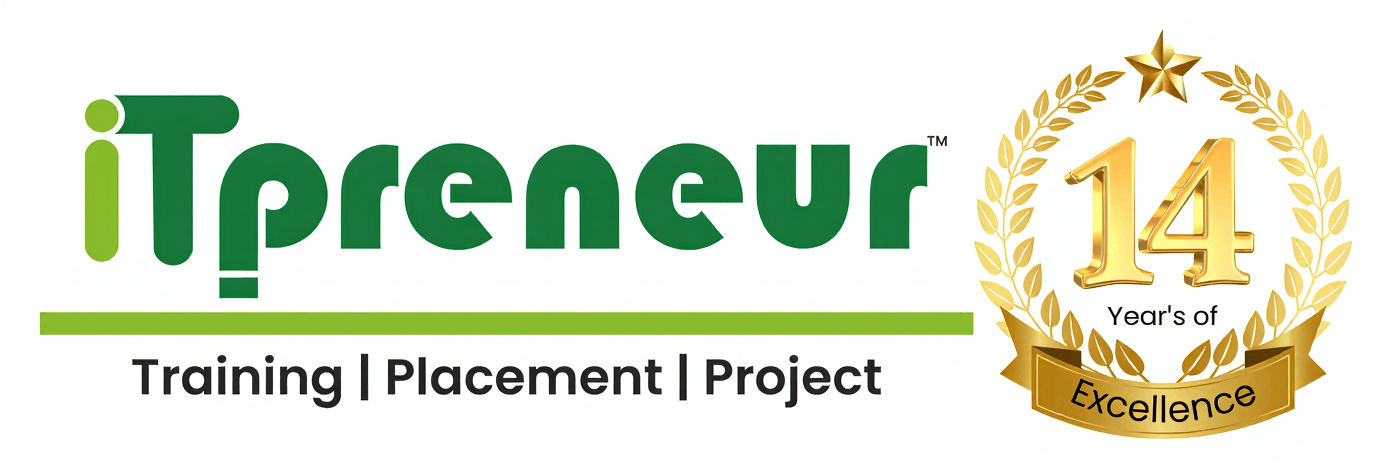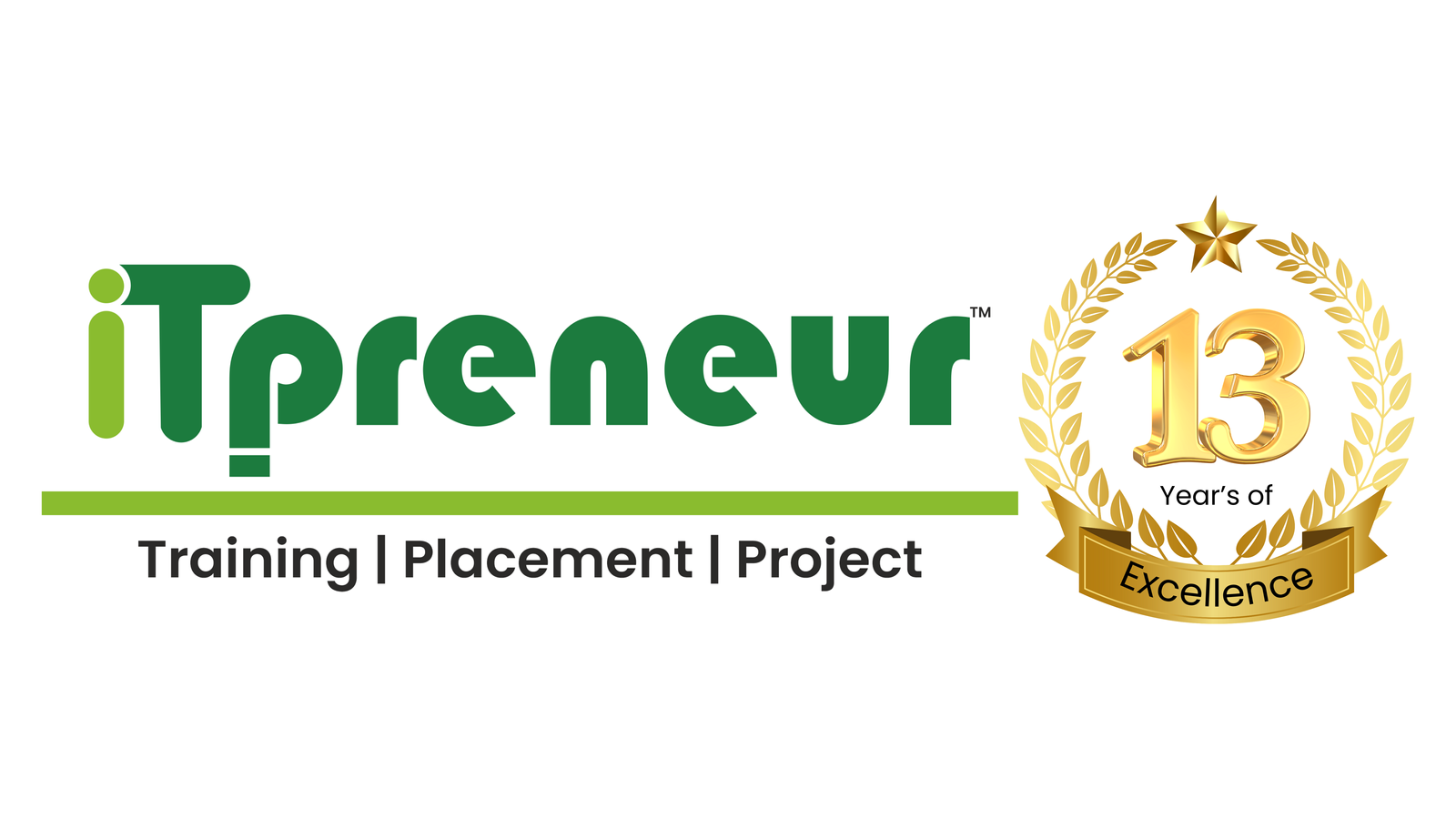Stay Ahead of Cyber Threats: ITpreneur’s Cybersecurity Courses for Modern Professionals

In today hyper-connected world cybersecurity is no longer optional; it a necessity. with every dog strike and online fundamental interaction we break ourselves to prospective risks. Cybercriminals are evolving making it decisive for businesses and individuals to stay one step ahead. astatine itpreneur we read the ever-growing take for good cybersecurity professionals which is wherefore our like an expert organized courses gift contemporary professionals to pilot and undermine these threats in effect 1 Why Cybersecurity is Critical Today Cybersecurity protects sensitive Information financial information and intellectual property from unauthorized access theft and damage. arsenic businesses take digital shift they look many cyber threats care ransomware phishing attacks and information breaches. A few alarming statistics highlight the urgency The average cost of a data breach globally in 2024 is estimated to exceed $5 million. Cybercrime is predicted to cost the world $10.5 trillion annually by 2025. Over 90% of cyberattacks begin with phishing emasafety of digital infrastructures
Future-Ready with Java: Trends Every Developer Should Know for 2025

The world of technology is developing at a faster pace than ever, and Java remains the corner stone for developers around the world. As we enter 2025, Java continues to evolve, innovate, and lead in software development. At ITpreneur, we‘re dedicated to equipping future developers with the skills required to be ahead. In this blog, we shall discuss the top Java trends that every developer should know to be future-ready. 1. Rise of Java in Cloud-Native Development During organization transitions to cloud-native architecture, Java is one language that has become synonymous to scalable, reliable, efficient and cloud applications. Such enhancements in the capabilities of spring boot and micronaut of Java for microservices or server less applications development improve its usability. Cloud computing is no longer a choice but rather a necessity for businesses looking to stay ahead of the curve. Java‘s lightweight and flexible frameworks make it the perfect choice for cloud-native solutions. Spring Cloud, for example, makes the development of distributed systems much easier, while Micronaut‘s dependency injection and AOT compilation ahead of time enhance performance in server less architectures. Further, the JEPs related to cloud computing will shape the way developers approach cloud-based Java applications. Why It Matters: Cloud-native development is the future of enterprise software. The master of these frameworks, especially for Java developers, will become very in–demand. Use these tools and you are going to be building robust scalable solutions that satisfy modern day demands. 2. Increased Adoption of GraalVM GraalVM, a high-performance runtime, is changing the way Java applications are run. It provides faster startup times, lower memory usage, and multi language support. Now, developers can write polyglot applications—a mix of Java, Python, JavaScript, and Ruby—to solve complex business requirements. Another feature is that the Java code can be compiled to native images, reducing runtime overhead significantly. This feature is particularly useful in cloud-native applications where resource optimization is critical. Key Takeaway Developers who can develop high-performing applications with GraalVM can do so as businesses move toward faster and leaner software solutions. Mastery in GraalVM, therefore prepares one for server less architectures. 3. Evolution of Java 21 and Beyond With Java 21 being an LTS, this has more and more new features including pattern matching, virtual threads, and structured concurrency. It’s meant to make coding simpler, improve performance, and be more productive for the developers. Virtual threads make the building of high concurrency applications quite a game-changer, for they are lightweight unlike other threads and allow the scaling of applications without being dependent on the resource limits of underlying hardware. Pattern matching for switch statements and records makes the code cleaner and more readable. So, developers can write less but achieve more. Java‘s focus on structured concurrency is another significant improvement that guarantees better error handling in multi-threaded applications. Pro Tip: Stay updated with Java‘s latest features by enrolling in ITpreneur‘s advanced Java courses, which provide hands-on projects to cement your understanding. 4. Enhanced Security Features Java is becoming more secure in this world of cyber threats. It is now a norm to ensure enhanced cryptography, use secure coding practices, and the usage of frameworks such as OWASP for developers for sound application security. The security of Java applications has been further enhanced by introducing sealed classes, which restrict the classes or interfaces that can extend or implement them. This gives better control over your code and minimizes vulnerabilities Also, libraries such as Bouncy Castle in Java are regularly updated to offer cutting–edge encryption and decryption functionality that would make your Java application impervious to current threats. Action Step: Understand how to include best security practices into your Java application to get ahead of the game. Secure your code and applications by understanding vulnerabilities and patching them appropriately. 5. Java in Artificial Intelligence and Big Data Java is gaining momentum in AI and Big Data, mainly because of its scalability and the ecosystem. Tools like Weka, Hadoop, and libraries such as Deeplearning4j are assisting developers in creating intelligent applications and managing large datasets efficiently. The reason Java has gained so much prominence in AI is that it is able to handle large-scale, distributed systems. In Big Data, frameworks like Apache Spark leverage Java for lightning-fast computations, making it ideal for processing large datasets. In AI development, Deeplearning4j enables developers to design, train, and deploy neural networks. Its compatibility with Hadoop and Spark further simplifies distributed training processes. Future Outlook: Java will have an increasing role in applications involving AI and data, thereby providing new opportunities to developers. You can thus place yourself as a great asset to industries that depend on AI and data science. 6. Rise of Functional Programming in Java Functional programming paradigms are becoming the norm in modern software development. Java‘s support for streams, lambdas, and functional interfaces makes it easier for developers to write cleaner, modular, and efficient code. As businesses demand faster development cycles, functional programming helps simplify complex codebases and reduces bugs. By mastering streams and functional constructs, you can unlock new possibilities for handling data pipelines and processing. Why You Should Care: Learning functional programming will make you stand out as a Java developer. It‘s an essential skill in addressing modern challenges in data processing and event-driven programming. 7. Integration with DevOps DevOps has revolutionized the software development lifecycle, and Java is playing a significant role in this change. Jenkins, Maven, and Docker are the tools that will be necessary for automating builds, testing, and deployments. Java‘s robust ecosystem ensures smooth integration with CI/CD pipelines. For example, Jenkins plugins for Maven will allow automated builds, while Docker containers allow Java applications to be deployed in isolated environments, ensuring consistency across development and production. Career Growth: DevOps experts Java developers will be extremely valuable in 2025. Mastering the tool and methodologies of DevOps will help increase productivity, making the development process efficient. production. 8. Evolution of Java for IoT Applications The Internet of Things (IoT) is another area where Java is making its mark. Java‘s platform independence and scalability make it ideal for developing IoT applications. Frameworks like Eclipse IoT and libraries like PI4J simplify the process of building applications for embedded devices. As IoT expands into smart homes, healthcare, and industrial automation, Java developers will find numerous opportunities to innovate. Takeaway: Understanding Java’s role in IoT can open doors to exciting projects in the connected device ecosystem. 9. Sustainability and Green Software Development with Java Sustainable software development is the growing trend in the wake of growing environmental concerns. Java is optimizing memory Usage and energy-efficient algorithms follow this trend. The developers can take help of JVM optimizations to build greener applications. Why It‘s Important: As businesses implement green practices, developers who know how to write sustainable Java code will be in high demand. 10. How ITpreneur Prepares You for the Future At ITpreneur, we offer comprehensive Java courses designed to equip you with: In-depth knowledge of Java’s latest features. Hands-on experience with frameworks like Spring Boot and tools like GraalVM. Guidance on integrating security best practices and DevOps tools. Real-world projects in AI, Big Data, and IoT to enhance your portfolio. Our expert trainers and industry-relevant curriculum ensure you’re always ahead of the curve. Whether you’re an aspiring developer or looking to advance your career, ITpreneur has the resources to help you succeed. Final Thoughts The future of Java is brighter than ever, and staying updated with these trends is essential for every developer. Whether it’s cloud-native development, AI integration, or mastering Java 21, the opportunities are endless for those willing to learn and adapt. Ready to become a future-ready Java developer? Join ITpreneur’s Java courses today and take the first step toward a successful career in software development
AUTOSAR: The Future of Automotive Software Development – A Comprehensive Guide by ITpreneur
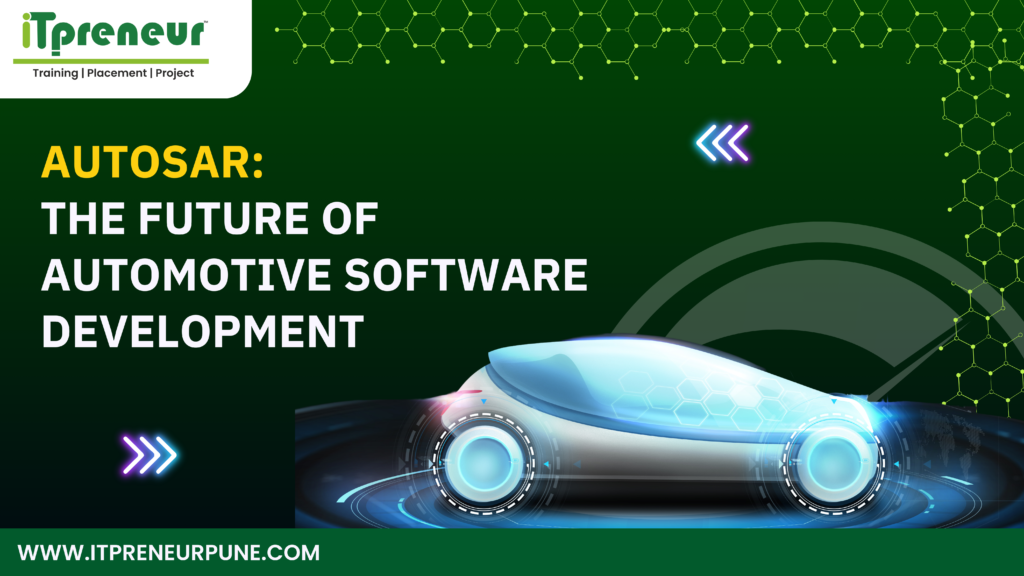
The automotive industry has undergone a complete change in the last few years, primarily driven by technological changes. Among the most important developments in this area is the increased role of software in automotive systems. As vehicles have become more complex, there has been an increased need for software that can control everything from engine control to infotainment and autonomous driving systems. Here comes AUTOSAR, a standardized framework for automotive software development. We’ll delve into AUTOSAR in this blog, its significance to the automobile industry, and how understanding this next–generation technology will offer promising career avenues for students and professionals alike. As part of our comprehensive IT training portfolio, we offer special courses on AUTOSAR software development that can open new avenues for individuals within this fast-paced field. 1 What is AUTOSAR? AUTOSAR is the acronym for Automotive Open System Architecture. It is an open and standardized software architecture designed to provide a common platform for the development of automotive software. The standard was established in 2003 by leading automotive manufacturers, suppliers, and software companies. Its purpose is to standardize interfaces, software components, and communication protocols so as to meet the ever-growing complexity of automotive systems. AUTOSAR defines a layered software architecture that separates the hardware and software components and allows manufacturers to easily develop, test, and integrate automotive software efficiently. AUTOSAR standards can therefore make automotive development shorter, the software more reliable, scalable, and capable of innovative products such as electric vehicles (EVs), autonomous driving, and infotainment systems. 2 The Core Principles of AUTOSAR To understand the relevance and potential of AUTOSAR, let’s look at its core principles: 1 Modularization: AUTOSAR divides the software into modular components, which can be reused inother projects. The modular approach facilitates adaptation to different vehicle platforms andhence helps manufacturers reduce costs and time-to-market. 2 Separation of Concerns: AUTOSAR iswelldefined about the distribution of each software component and layer;for instance, it decomposes the software into application layers, basic software layers, and communication layers, whichwill, consequently make it easier for developers to focus on specific areas of the functionality in a vehicle. 3 Scalability: The AUTOSAR architecture is quite scalable. It means thisarchitecture can be used fromalow-end simple vehicle control unitall the way to the top end, with high-end systems involved in autonomous driving, infotainment, and ADAS. 4 Abstraction: One of the features of AUTOSAR most important is that it helps abstract hardHardware ware-specific details from the software layer. In this, if software can be made to run across different hardware platforms, it saves on huge changes that must be brought about and still increases flexibility and reduces the dependency on specific hardware suppliers. 5 Interoperability: The AUTOSAR standard ensures that software components can communicate seamlessly with each other, regardless of the manufacturer. This interoperability is key to creating integrated automotive systems that rely on a mix of software from different suppliers. 3 Why is AUTOSAR Crucial for Automotive Software Development? With the industry growing ever more software-based, developers are looking for standardized solutions that reduce complexity and allow them to be consistent and provide a high level of safety and reliability. That is why AUTOSAR is becoming the new game in town: 1 Increased Complexity: Modern vehicles contain hundreds of electronic control units (ECUs) controlling everything from braking systems to airbags and entertainment features. AUTOSAR allows these diverse ECUs to be integrated into a single system, improving efficiency and making the software easier to maintain. 2 Autonomous Driving: Self-driving cars require a dependable, real-time communication between several ECUs. AUTOSAR standardized communication protocols ensure that these systems can communicate with each other 3 Software Reusability: Automotive software was developed from scratch for every new vehicle platform in the past. With AUTOSAR, developers can reuse software components across different models, reducing development costs and accelerating the time-to-market for new features. 4 Safety and Reliability: AUTOSAR gives a structured approach for safety-critical systems and makes sure that the software adheres to the high demands of automotive safety standards, like ISO 26262. It is a framework for making safer and more reliable software, which is the heart of automotive applications like ADAS and vehicle control systems. 5 Innovation Focus: Since AUTOSAR takes care of most of the low-level details of automotive software, developers can focus on building innovative applications such as AI-powered driver assistance systems, infotainment, and EV technology. This fosters a greater focus on advancing the future of automotive technology. 4 AUTOSAR Software Architecture AUTOSAR’s software architecture is composed of several layers, each playing a crucial role in ensuring the system’s functionality and efficiency. Let’s break down the key layers: 1 Application Layer: This layer has the application software components or SWCs, which express the functionality of the vehicle. For example, the SWC can control the air conditioning system, infotainment, or lighting system. These SWCs are hardware-independent and can be developed and tested separately. 2 Basic Software Layer: It acts as the base of the application software and delivers services like memory management, diagnostics, and communication. It manages low-level tasks to ensure that the system runs smoothly. 3 Microcontroller Abstraction Layer (MCAL): The MCAL is responsible for providing an abstraction between the hardware and software layers. It interacts directly with the microcontroller hardware, enabling the basic software to work on different hardware platforms. 4 Communication Layer: The communication layer is used for the communication between software components and ECUs. In this layer, standardized protocols like CAN, LIN, Ethernet, and FlexRay have been implemented to allow a smooth data exchange. 5 Operating System Layer: In AUTOSAR, real-time operating systems are supported to govern resources and time-critical tasks. The operating system schedules the tasks so that the system is operated in an efficient manner. 6 Diagnostic Layer: The diagnostic layer allows for monitoring, testing, and troubleshooting of the vehicle‘s software and hardware systems. It is used to identify faults and ensure that the vehicle meets industry safety standards. 5 AUTOSAR Evolution: From Classic to Adaptive AUTOSAR has evolved over time to meet the increasing complexity of automotive systems. There are two main variants of AUTOSAR: 1 Classic Platform: Classic Platform is designed for tradition embedded systems with limited resource. It is suitable for an ECU-based system for example, engine control or transmission. It focuses mainly on the high level of modularity, scalability, and interoperability. 2 Adaptive Platform; The AUTOSAR Adaptive Platform was established for more demanding applications than before, like the ones necessary for autonomous driving, AI, and high-performance infotainment. It provides for high computing power and flexible updates of software that can serve well in future-proof vehicle architectures. This shift to the Adaptive AUTOSAR represents a big shift towards intelligent, connected, and autonomous vehicles by the automobile industry. Since data and artificial intelligence will become highly relevant for automobiles, the Adaptive Platform offers scalability and flexibility for the development of next–generation automotive software. 6 Career Opportunities in AUTOSAR With the increasing reliance on software in the automotive industry, the demand for professionals with expertise in AUTOSAR is expected to grow exponentially. The ability to develop, implement, and optimize AUTOSAR-based systems is becoming a highly sought-after skill in the automotive sector. Key Job Roles in AUTOSAR Development 1 AUTOSAR Software Engineer: These engineers design and develop AUTOSAR-compliant software components, ensuring that they integrate seamlessly with vehicle ECUs. 2 AUTOSAR Architect: Architects design the overall software structure for automotive systems, focusing on scalability, modularity, and interoperability. 3 Embedded Systems Engineer: These engineers work on the embedded systems that run AUTOSAR software, ensuring they meet performance, safety, and reliability standards. 4 Test Engineer (AUTOSAR): The test engineers verify the AUTOSAR software components to ensure they behave correctlyin real-world situations. 5 AUTOSAR Consultant: Experts in AUTOSAR offer consultancy services to automotive companies onimplementation, customization, and optimization. 7 Why Learn AUTOSAR with ITpreneur? At ITpreneur, we offer complete AUTOSAR courses designed to put students in a position for success in the automotive development of software. Our curriculum covers both AUTOSAR Classic and AUTOSAR Adaptive, providing a very holistic understanding of the technology. Key Benefits of Our AUTOSAR Courses: 1 Industry Relevant Curriculum: Courses offered in our institution are prepared jointly with industry experts to make them abreast with the current trend and demand in the automobile software development. 2 Hands-on Training: We provide practical, hands-on experience with AUTOSAR development tools and platforms, giving students a competitive edge. 3 Placement Assistance: ITpreneur‘s dedicated placement cell works with top automotive companies to help students secure rewarding career opportunities in AUTOSAR development. 4 Expert Trainers: Our trainers are experienced professionals with real-world expertise in automotive software and AUTOSAR systems. 8 Conclusion As the automotive industry continues to evolve, AUTOSAR will play a critical role in shaping the future of vehicle software. Its standardized architecture provides the foundation for developing scalable, reliable, and innovative automotive systems that power everything from electric vehicles to
How iTpreneur Bridges the Gap Between Education and Employment

In today‘s fast-paced world, the IT industry is constantly evolving, and the demand for skilled professionals is growing. However, many graduates are not prepared for the workforce, with a significant gap between academic knowledge and industry requirements. iTpreneur is committed to addressing this issue by providing comprehensive, job-oriented training programs that ensure students are ready to thrive in the competitive IT landscape. 1 Understanding the Industry-Academia Gap The biggest challenge job seekers face today is in the difference between theoretical education and the practical demands of industry. Traditional education does not prepare most students with hands-on experience and problem-solving skills, which happen to be employers’ priorities. iTpreneur identifies gaps, designing its programs to match real-world IT requirements. 2 Job-Oriented Curriculum iTpreneur‘s curriculum follows the trends of the industries and focuses on Full Stack Development, Software Testing, Business Analysis, and more in-demand technologies. Each course is structured to prepare students for specific roles, so that they get hold of the exact skills needed to perform exceptionally in their respective fields 3 Practical, Hands-On Training Theory alone is not enough. iTpreneur has practical learning with live projects, case studies, and simulations. This hands-on approach makes sure that students gain experience in real life, which makes them job-ready from day one 4 Industry-Experienced Trainers At iTpreneur, the best learns with the best. The trainers are very experienced people who have been working in the industry for a long time. They bring their expertise into the classroom and provide insights, mentorship, and guidance that go beyond textbooks. 5 Soft Skills and Communication Training Technical skills are necessary, but soft skills really make the difference in career success. iTpreneur provides special training sessions in communication, teamwork, leadership, and problem-solving so that students can move confidently into the professional world. 6 100% Placement Guarantee As per their guarantee, 100% placement, institutions offer a complete safety net for students, so when they complete courses, students are assured to get placed in organizations of their reputation. 7 Resume Building and Mock Interviews To further enhance employability, iTpreneur offers career support. Students are helped to write professional resumes and undergo mock interviews to build up their confidence and hone their interviewing skills. 8 Real-Time Industry Exposure iTpreneur‘s strong relationships with industry leaders provide students with real-time exposure through internships, live projects, and collaborative opportunities. This not only enhances learning but also boosts employability 9 Alumni Success Stories That has been speaking volumes about its effectiveness by the success stories of students, who after getting jobs at top IT companies, also come back to the institutes to share their experiences to inspire current students and authenticate the institute‘s approach. 10 Lifetime Career Guidance iTpreneur offers lifetime career support through mentoring and upskilling opportunities with job referrals to ensure their success in the long run beyond completion of the course. 11 Innovative Learning Techniques iTpreneur adopts the best of modern learning techniques, like blended learning models, online classes, and access to state-of-the-art tools. These learning techniques make learning flexible, engaging, and effective. 12 Placement Partners and Network iTpreneur has a strong network of placement partners so that students can get placements in the leading IT firms. The institute organizes placement drives and connects the students with top recruiters. 13 Affordable Learning with Flexible Payment Options iTpreneur offers competitive pricing, flexible payment options, 0% EMI plans for accessibility of quality education so financial constraints do not hamper them in achieving their dreams. 14 Other Institutes vs. iTpreneur: What Sets Us Apart? What differentiates iTpreneur from other training institutes is its well-rounded curriculum, hands-on training, industry connections, and guaranteed placements. In contrast to other institutes, iTpreneur‘s emphasis on real-world readiness, personalized support, and lifetime guidance makes it a reliable partner in building careers. 15 Conclusion iTpreneur’s holistic approach to education bridges the gap between academia and the professional world. By offering industry-aligned training, practical experience, and unmatched career support, iTpreneur ensures its students are not just prepared but empowered to succeed in the IT industry. Enroll today and take the first step towards a fulfilling and secure IT career!
How to Crack Your First IT Internship Interview

It is exciting as well as challenging to pursue a career in IT. The first and the most common way that generally lays the foundation for a future job is by doing an internship. By recognizing the value of this preparation, ITpreneur has designed courses that will equip you with course knowledge and skill. This blog will coach through practical steps on how to shape up for acing that first internship interview in IT and standing out as a top candidate. Why IT Internships Matter IT internships are the learning phase but also the entrance to the real-world IT environment. Here is why they are important: Hands-on Experience: Transfer your theoretical knowledge to practical projects. Networking Opportunities: Establish contacts in the IT industry. Resume Boost: Promote your skills to future employers. Career Pathway: A lot of these internships translate into full-time jobs. Step 1: Research the Role and Company Before the interview, dive deep into the company’s background. Know what the job description entails; identify important skills and technologies cited. Explore the Company’s Projects: Highlight how your skills can contribute to their initiatives. Familiarize yourself with their tech stack: If they use Python, Java, or cloud platforms, brush up on those. Pro Tip: Use LinkedIn for research in the company; connect with its current or past interns as well. Step 2: Master Technical Skills In short, it means that they expect a sound foundation of IT basics. ITpreneur‘s course focuses on those very skills in line with industry needs. Key Skills to Focus On: Programming: Languages like Python, Java, or JavaScript. Web Development: Basics of HTML, CSS, and frameworks like React. Database Management: SQL queries and database fundamentals. Problem-Solving: Algorithms and data structures. Testing: Manual and automated testing basics. Enroll in ITpreneur’s courses to gain hands-on experience with live projects. Step 3: Sharpen Your Soft Skills Technical skills will take you to the door, but soft skills help you survive in an interview. Focus Areas: Communication: Express your thoughts clearly and in simple words. Teamwork: Share examples of group projects you have done. Adaptability: Emphasize that you are a quick learner and ready to pick up new tools and technologies. Interviewers want those candidates who can work well as a team and contribute toward the team. Step 4: Build an Outstanding Resume A well-crafted resume can be the difference between getting an interview and not. Resume Tips: Make it concise: Keep your resume to one page, focusing on relevant experiences. Highlight skills: List technical skills such as programming languages, tools, and frameworks Showcase projects: Include 2-3 significant projects Example: “Developed a dynamic e-commerce website using MERN stack, improving performance by 30%.” Add certifications: Mention certifications earned through ITpreneur courses Example: “Certified Full Stack Developer – ITpreneur.” Include Internships or Freelance Work: Even small experiences count. Use Action Verbs: Start bullet points with words like “Developed,” “Designed,” “Implemented,” or “Tested.” Pro Tip: Tailor your resume to match the job description. Step 5: Prepare for Common Interview Questions Here are some questions to practice: “Tell us about yourself.” Craft a concise introduction focused on your technical background and aspirations. “Why do you want to join this internship?” Link your goals with what the company offers. “Describe a project you worked on.” Use the STAR method (Situation, Task, Action, Result) to present your answer. “What are your strengths and weaknesses?” Be honest and focus on strengths relevant to the role while showing how you’re improving weaknesses. Step 6: Build an Impressive Portfolio Having a strong portfolio sets you apart. Include: Having a strong portfolio sets you apart. Include: Projects from ITpreneur courses, such as full-stack applications or automated test scripts. Contributions to open-source platforms or GitHub repositories. A LinkedIn profile highlighting certifications, projects, and achievements. Step 7: Dress the Part and Be Confident Dress Professionally: First impressions count, so opt for formal attire. Stay Positive: Nervousness is normal, but maintaining a confident demeanor can leave a lasting impression Step 8: Post-Interview Etiquette Send a Thank-You Email: Express gratitude for the opportunity and reiterate your interest in the role. Ask for Feedback: This helps you improve for future interviews. 9 : Crack IT Internships with ITpreneur’s Help At ITpreneur, we not only offer courses but mentor you to face real-world challenges. Our career-oriented programs are designed to: Provide industry-ready skills in Full Stack Development, Software Testing, Business Analysis, and more. Provide mock interviews, resume-building sessions, and career counseling. Connect you with placement opportunities in top IT companies. So, take that first step towards a successful IT career by joining one of our courses today! 10 : Conclusion Your first IT internship interview might feel daunting, but with the right preparation and mindset, you can turn it into an incredible opportunity. Follow these steps, equip yourself with skills from ITpreneur, and approach every interview with confidence. Ready to kickstart your IT career? Join ITpreneur and get trained by industry experts. Your dream IT internship is just a step away!
Breaking Barriers: A Guide to Moving from Non-IT to IT Careers
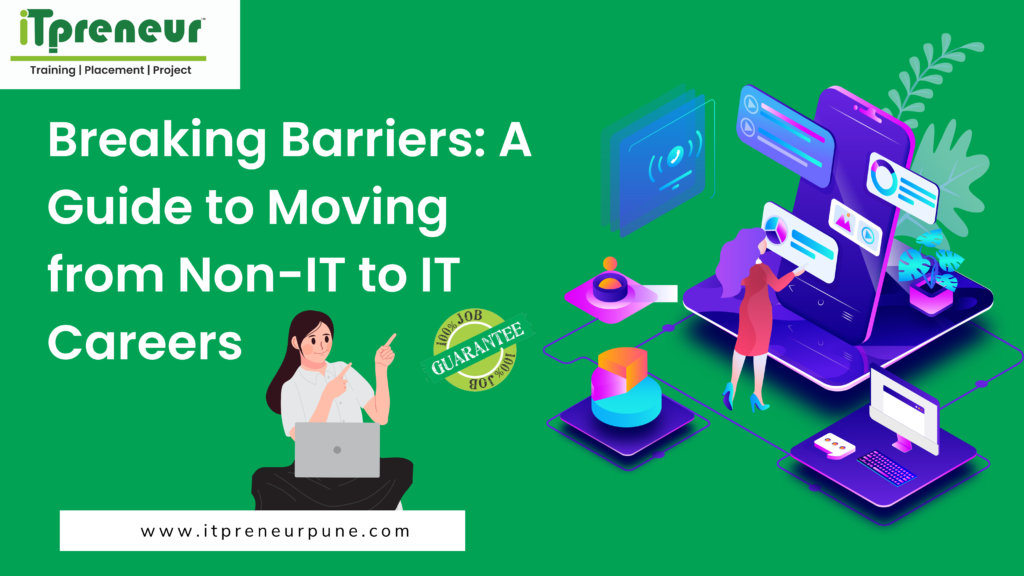
The world of IT is vast, dynamic, and ever-changing. It gives countless opportunities for professionals with a wide variety of different roles. But for aspirants from non-IT backgrounds, entry into the IT industry is often scary. At iTpreneur, we believe in empowering such aspirants from all walks of life by equipping them with skills and knowledge to excel in IT. This guide breaks down actionable steps, career paths, and insights that will help you make that confident transition from a non-IT background into a rewarding IT career. 1 Why Consider a Career in IT? he IT sector is one of the fastest-growing industries in the world, with its growth influenced by digital transformation, artificial intelligence, cloud computing, and much more. Here’s why it‘s an excellent career choice: High Demand: IT professionals are in demand across industries, from healthcare to finance. competitive Salaries: The salary for any IT job is well-paying. The domain :offers diversified job roles such as software development, cybersecurity, data analysis, and UI/UX design. There is: the potential for remote work with most IT jobs. 2 Challenges of Transitioning to IT Transitioning to IT is achievable, but it comes with challenges such as: Skill Gap: Non-IT professionals lack technical skills in specific roles. Industry Jargon: IT uses technical terms that are unfamiliar. Job Market Competition: Competing with the experienced IT professionals is intimidating. The good news is that all of these can be overcome with the right approach and resources. 3 Steps to Transition into IT 1. Identify Your Goals Before entering IT, define your career objectives: Which IT careers appeal to you (Web Developer, Software Tester, Business Analyst, and others)? Do you want technical or non-technical positions Browse job descriptions to understand what qualifications, certifications, and experience are expected in your desired role. 2. Evaluate Transferable Skills Your non-IT experience is more valuable than you may think. Problem-solving, project management, communication, and analytical thinking are all very relevant to IT roles. For example: Marketing Professionals: Transition into digital marketing analytics or UX design. Finance Professionals: Consider data analytics or financial IT systems. Educators: Explore opportunities in e-learning platforms or IT training roles. 3. Upskill Through Relevant Courses For a non-IT professional, professional courses are a game-changer. iTpreneur provides courses relevant to the industry, such as: Full Stack Development: Learn front-end and back-end development. Software Testing: Understand how to do manual and automated testing. Business Analysis: Connect IT teams to business needs. Cybersecurity: Master the art of securing digital assets. These courses are aimed at making it easier for beginners to get practical skills and hands-on experience. 4. Earn Certifications Professional courses are a game-changer for those who are not IT professionals. Industry-relevant courses that iTpreneur offers include: Validations of skills and certification of resumes. The most highly recommended certifications include the following: CompTIA A+ is for entry-level IT knowledge. AWS Certified Solutions Architect for cloud computing roles. Certified ScrumMaster (CSM) is for project management in IT iTpreneur‘s courses include preparation for certifications to enable students to succeed. 5. Build a Portfolio Practical experience speaks louder than theoretical knowledge. The portfolio includes: Coding projects if you’re learning to program. Case studies or reports for data analysis. Mock testing environments for software testing. iTpreneur stresses that you graduate with a solid portfolio. 6. Gain Practical Experience Real-World Skills Application Opportunities: Internship : Entry–level jobs are where it is always best to start. Freelance: Offer your services to clients on freelancing sites like Upwork or Fiverr. Volunteer Projects: Do open source projects or work with small businesses. 7. Leverage Networking and Mentorship Connect with IT professionals and seek guidance. Join communities like LinkedIn groups, attend webinars, and participate in hackathons to build a network. At iTpreneur, we offer mentorship from industry experts to guide you through the learning process and job search. 8. Prepare for Interviews Ace your IT interviews by: Practicing technical questions specific to your desired role. Preparing to showcase how your non-IT background adds value. Highlighting certifications, training, and projects during discussions. 9 Popular IT Roles for Non-IT Professionals Here are some IT roles well-suited for individuals transitioning from non-IT fields: Role Description Skillset Needed Business Analyst Bridge between business needs and IT solutions Analytical thinking, communication Data Analyst Analyze and interpret data for decision-making Excel, SQL, Power BI Software Tester Ensure software meets quality standards Attention to detail, testing tools Front-End Developer Design and implement user interfaces HTML, CSS, JavaScript Cybersecurity Analyst Protect systems from cyber threats Networking, cybersecurity fundamentals 10 How iTpreneur Can Help You Transition At iTpreneur, we understand the challenges of career transitions. Our courses are tailored to: Provide beginner-friendly training with no prerequisites. Offer placement assistance to help you land your first IT job. Deliver flexible learning options with live and recorded sessions. Include real-world projects to boost your confidence. With over 12,000 students successfully placed, we are committed to your success. 4 Final Thoughts Breaking into IT from a non-IT background is not just possible—it’s an exciting opportunity to reinvent your career. With the right mindset, skills, and guidance from iTpreneur, you can achieve your IT career goals and thrive in this dynamic industry. Are you ready to start your journey? Explore our courses and take the first step toward your IT career today! Visit iTpreneur to learn more about our courses and how we can help you transition into the IT industry with confidence
Ace Your Python Interview: Top 15 Questions Every Developer Must Prepare For

Python has long been established as one of the most sought-after programming languages in the tech world. It’s simple, versatile, and has an enormous library of applications. This is why it remains a favorite for developers and employers alike. Whether aspiring to be a data scientist, web developer, or automation expert, mastery of Python remains a crucial step in any career path At iTpreneur, we provide aspiring developers with knowledge and confidence for acing their interviews and landing their ideal jobs. This blog goes through the top 15 Python interview questions that could help you understand core concepts and head into an interview challenge face–to-face 1. What are Python’s key features? Python is the perfect language for a beginner and even an experienced developer. The most prominent features are as follows 1 Simple and Readable: Python‘s syntax is very easy to learn and closely resembles English 2 Interpreted Language: Python code doesn‘t require compilation and gets executed line by line. 3 Dynamically Typed: No need to declare variable types, which makes coding faster and simpler. 4 Extensive library support: Libraries like NumPy, Pandas, Matplotlib and TensorFlow make Python an omnipotent tool. 5 Platform-Independent: Write once and run anywhere 2. Explain Python’s Memory Management System Memory management in Python is a key feature that ensures the efficient allocation and deallocation of memory during program execution. Key concepts include: 1 private Heap Space: Python objects are stored in a private heap space, which the interpreter manages 2 Garbage Collection: The garbage collector deletes unused objects in Python. 3 Dynamic Memory Allocation: In Python, objects are allocated dynamically using an internal memory manager 3. What Are the Different Data Types in Python? Data types define the kind of value a variable can hold. Python supports several built-in data types, including: Numeric Types: int, float, complex Sequence Types: list, tuple, range, str Set Types: set, frozenset Mapping Type: dict Boolean Type: bool Binary Types: bytes, bytearray, memoryview Explain their use in real-world applications, such as using lists for storing datasets or dictionaries for managing key-value pairs. 4. Differentiate Between Shallow Copy and Deep Copy Understanding the difference between shallow and deep copies is critical in managing data structures. 1 Shallow Copy: Copies the object but retains references to nested objects. 2 Deep Copy: Recursively copies the object and all of its contained objects This is often tested when working with mutable and nested data structures 5. How Does Python Handle Exceptions? Python provides robust mechanisms to handle exceptions, ensuring program stability. Use the try-except blocks to catch exceptions. Incorporate the finally block for cleanup actions. Raise custom exceptions using the raise keyword. For example, in a production environment, exceptions can help gracefully handle errors like invalid user input or connection timeouts 6. What is the Difference Between Mutable and Immutable Objects? In Python: Mutable Objects: Can be changed after creation (e.g., lists, dictionaries). Immutable Objects: Cannot be changed once created (e.g., strings, tuples). This is a foundational concept that affects how data is stored and manipulated in memory. 7. What Are Lambda Functions in Python? Lambda functions are anonymous functions defined using the lambda keyword. They are used for small, simple operations. They are often used when a small function is needed for a short time, such as sorting a list of tuples by the second element. 8. What Are Python Decorators? Decorators allow you to modify the behavior of a function or class method dynamically. They are widely used in frameworks like Django for adding functionalities such as authentication 9. Explain the Difference Between Python Modules and Packages Module: A single file containing Python code. Package: A collection of modules, organized using directories and an __init__.py file. This organization helps developers build scalable and maintainable codebases. 10. What Are Python’s Popular Libraries and Frameworks? Highlight essential libraries and their use cases: NumPy: Numerical computing. Pandas: Data manipulation. Django: Web development. Flask: Lightweight web applications. TensorFlow: Machine learning. Employers often ask this question to assess your familiarity with tools relevant to their projects. 11. What is the Purpose of Python’s with Statement? The with statement simplifies resource management, ensuring proper handling of resources like file streams. For instance, it automatically closes files once operations are complete, reducing the risk of resource leaks. 12. How Do is and == Differ? is: Compares the identity of objects (memory location). ==: Compares the value of objects. Understanding this distinction is crucial when working with objects, especially mutable ones. Here’s the updated blog with Question 3 modified and an additional question added: Ace Your Python Interview: Top 15 Questions Every Developer Must Prepare For Python has firmly established itself as one of the most sought-after programming languages in the tech industry. Its simplicity, versatility, and vast library ecosystem make it a favorite among developers and employers alike. Whether you’re aspiring to become a data scientist, web developer, or automation expert, mastering Python is a critical step in your career journey. At iTpreneur, we prepare aspiring developers with the knowledge and confidence they need to ace interviews and land their dream jobs. This blog will explore the top 15 Python interview questions to help you understand core concepts and tackle interview challenges head-on. 1. What are Python’s key features? Python stands out as an ideal language for beginners and seasoned developers alike. Some of its most prominent features include: Simple and Readable: Python’s syntax is easy to learn and closely resembles English. Interpreted Language: Python code doesn’t need compilation and is executed line by line. Dynamically Typed: No need to declare variable types, making coding faster and simpler. Extensive Library Support: Libraries like NumPy, Pandas, Matplotlib, and TensorFlow make Python a versatile tool. Platform-Independent: Write code once and run it anywhere. 2. Explain Python’s Memory Management System Memory management in Python is a key feature that ensures the efficient allocation and deallocation of memory during program execution. Key concepts include: Private Heap Space: Python objects are stored in a private heap space, which the interpreter manages. Garbage Collection: Unused objects are automatically cleaned up by Python’s garbage collector. Dynamic Memory Allocation: Python uses an internal memory manager to handle object allocation dynamically. 3. What Are the Different Data Types in Python? Data types define the kind of value a variable can hold. Python supports several built-in data types, including: Numeric Types: int, float, complex Sequence Types: list, tuple, range, str Set Types: set, frozenset Mapping Type: dict Boolean Type: bool Binary Types: bytes, bytearray, memoryview Explain their use in real-world applications, such as using lists for storing datasets or dictionaries for managing key-value pairs. 4. Differentiate Between Shallow Copy and Deep Copy Understanding the difference between shallow
The Future of Software Testing: How AI and Automation are Changing the Game

The need for high-quality software is growing in today’s quickly changing tech environment, which makes software testing an essential step in the development process. Even though they work well, traditional software testing techniques have drawbacks, particularly as applications get more complicated and development cycles get shorter. This is where automation and artificial intelligence (AI) enter the picture, changing the process of software testing. This blog will examine the future of software testing and the ways that automation and artificial intelligence are transforming the secto 1 The Evolution of Software Testing Software testing used to be done by hand, requiring testers to carry out monotonous duties like running tests, looking for errors, and making sure that new features didn’t interfere with already-existing functionality. Even though manual testing is still an essential part of the quality assurance (QA) process, it frequently takes a lot of time and money. As a result, automated testing tools that can execute tests more accurately and efficiently have become more popular. Software testing has already benefited from automation since it has decreased human error, accelerated the process, and produced more reliable results. But as artificial intelligence (AI) advances, software testing is changing dramatically. These days, testing tools powered by AI can learn from historical data, spot trends, and even anticipate possible problems before they happen. Let’s have a 2 How AI is Revolutionizing Software Testing AI is transforming the way we approach software testing in several key ways 1. Test Automation with AI Traditionaltest automation tools rely on predefined scripts to execute tests. These scripts must be manually updated whenever the application changes, which is time-consuming and error-prone. On the other hand, AI-driven test automation tools can independently adapt to application changes. They can automatically generate test scripts based on application behavior and detect changes in user interface (UI) or functionality. This adaptability ensures that testing remains effective as software evolves. AI-powered tools can also streamline the test execution process by running tests in parallel, prioritizing critical tests, and significantly reducing testingtime. 2. AI-Powered Bug Detection One of the biggest challenges in software testing is identifying bugs and issues that may impact user experience. AI algorithms can analyze large amounts of data and identify potential errors that human testers and traditional tools may miss. By leveraging machine learning and natural language processing (NLP), AI can detect even the most subtle inconsistencies in software behavior and provide developers with actionable insights to fix issues before they reach production. 3. Predictive Analytics for Test Coverage AI and machine learning can predict potential failure points in your application by analyzing historical data, usage patterns, and code changes. This predictive capability helps QA teams focus on high-risk areas of your software that are at higher risk of errors, ensuring that critical parts of your application are thoroughly tested. Predictive analytics also helps optimize test coverage by identifying areas where tests need to be added or improved. 4. AI-Driven Visual Testing The user interface (UI) is a critical part of any software. A key part of testing is ensuring that the UI is functional and visually appealing. AI-powered visual testing tools automatically compare screenshots of an application’s UI with the expected design, highlighting inconsistencies and visual defects. These tools detect issues such as layout changes, color shifts, and misalignment, ensuring that the UI looks and behaves as intended on different devices and screen sizes. 5. Self-Healing Test Automation One of the most exciting advancements in AI-driven testing is the concept of self-healing automation. In traditional automation, if a test fails due to changes in the applicationâs UI or functionality, the test script needs to be updated manually. However, AI-powered self-healing tests can automatically detect when a test is likely to fail and adjust the test scripts on the fly, ensuring that test execution continues without interruption. 3 The Role of Automation in Software Testing While AI is at the forefront of a revolution in software testing, automation plays a key role in optimizing the testing process by enabling machines to perform time-consuming and repetitive tasks, allowing human testers to focus on more complex testing scenarios. 1. Faster Test Execution Automated testing tools can execute tests much faster than human testers. With the ability to run tests in parallel, automated testing significantly shortens the feedback loop, enabling developers to catch bugs earlier in the development cycle. This is particularly beneficial in agile development environments, where software is released frequently and rapid testing is crucial. 2. Improved Test Coverage Automation enables you to run a larger number of tests in a shorter period of time, increasing overall test coverage. This is especially useful for regression testing. Automated tests can quickly check whether new code changes have unintentionally broken existing functionality. Running more tests in a shorter period of time reduces the chance of introducing undetected errors. 3. Reduced Human Error Human error can occur during manual testing, which can lead to missed errors and inaccurate test results. Automated testing, on the other hand, is consistent and repeatable, reducing the risk of errors. This results in more reliable test results and improves the overall quality of your software. 4. Cost-Effectiveness Although the initial setup costs of automation tools can be high, they can significantly reduce long-term testing costs. Automation reduces the need for manual work and can be reused across multiple test cycles, making it a more cost-effective solution in the long run. 3 Challenges and Limitations of AI and Automation in Software Testing While AI and automation offer numerous benefits, they also come with their own set of challenges: 1. Initial Setup and Maintenance Implementing AI and automation in software testing requires significant upfront investments in tools, infrastructure, and training. Setting up and integrating AI-driven tools into a development pipeline can be complex, and maintaining these tools requires ongoing monitoring and tuning. 2. Handling Complex Test Scenarios AI and automation are great for repetitive tasks and processing large amounts of data, but can struggle with more complex scenarios that require human judgment, such
Stay Ahead of Cyber Threats: ITpreneur’s Cybersecurity Courses for Modern Professionals

Cybersecurity is no longer an option for business but a necessity in today’s hyper-connected world. It gets exposed with every click, tap, and online interaction; therefore, we require cybersecurity experts to prevent it. Cybercriminals are evolving constantly, which makes businesses, and even individuals, have to step ahead of them. ITpreneur understands that the demand for cybersecurity professionals is increasing every day, so our expertly designed courses train modern professionals to prevent and counter these threats. 1 Why Cybersecurity is Critical Today? Cybersecurity protects sensitive data, financial information, and intellectual property from unauthorized access, theft, and damage. As businesses adopt digital transformation, they face numerous cyber threats like ransomware, phishing attacks, and data breaches. A few alarming statistics highlight the urgency The average cost of a data breach globally in 2024 is estimated to exceed $5 million. Cybercrime is predicted to cost the world $10.5 trillion annually by 2025. Network Security: Protecting internal networks from unauthorized access and threats. Application Security: Ensuring that software and apps are free from vulnerabilities. Information Security: Safeguarding data integrity and privacy. Operational Security: Managing the processes and decisions around data handling. Disaster Recovery and Business Continuity: Preparing for and recovering from cyber incidents. Over 90% of cyberattacks begin with phishing emails. These numbers underscore the demand for qualified cybersecurity experts who can mitigate risks and ensure the safety of digital infrastructures. 2 What is Cybersecurity? Cyber security basically refers to safeguarding systems, networks, and programs from some form of digital attacks. These attempts are to access, modify, or destroy sensitive information, extort money, or disrupt business operations Network Security: Protecting internal networks from unauthorized access and threats. Application Security: Ensuring that software and apps are free from vulnerabilities. Information Security: Safeguarding data integrity and privacy. Operational Security: Managing the processes and decisions around data handling. Disaster Recovery and Business Continuity: Preparing for and recovering from cyber incidents. 3 Why Choose Cybersecurity as a Career? Cybersecurity offers exciting career prospects and high earning potential. With an increasing shortage of skilled professionals, this field promises tremendous growth and stability. High Demand for Cybersecurity Experts The global cybersecurity workforce gap exceeds 3.4 million professionals, therefore offering large opportunities for aspirants. Diverse Career Paths From ethical hacking and penetration testing to risk assessment and compliance, cybersecurity provides a wide variety of positions Security Analyst Security Engineer Chief Information Security Officer (CISO) Forensic Computer Analyst Lucrative Salaries The average salary offered for cybersecurity professionals is between ₹7–15 LPA in India and countries worldwide. Make an Impact Cybersecurity is a very rewarding career as professionals end up saving the citizen, organization, or even the nation from cyber threats. 4 ITpreneur: Your Gateway to Cybersecurity Excellence Therefore, ITpreneur bridges the gap between theoretical knowledge and practical application. ITpreneurs cybersecurity courses are intended to help meet today’s fast-paced world of the digital landscape so that students are better placed to solve real-world challenges. 5 What Makes ITpreneur’s Cybersecurity Courses Unique? Comprehensive Curriculum Our courses include from basic to advanced such as threat detection, incident response, encryption techniques, ethical hacking, and compliance management Hands-on Training We focus on practical skills by including real-world scenarios, case studies, and lab-based exercises Expert Faculty Learn from seasoned cybersecurity professionals with years of industry experience. 100% Placement Assistance 100% Placement Assistance We offer end-to-end support in resume building, interview preparation, and job placement. Flexible Learning Options The courses are available for both beginners and professionals, with a flexible time arrangement to suit those working. 6 Course Modules at ITpreneur Introduction to Cybersecurity Overview of threats and vulnerabilities Understanding risk management and mitigation strategies Ethical Hacking and Penetration Testing Techniques for identifying system weaknesses Hands-on penetration testing practices Incident Response and Management Managing and mitigating cybersecurity incidents Disaster recovery and business continuity planning Data Protection and Encryption Cryptography fundamentals Data privacy regulations (GDPR, HIPAA) Compliance and Governance Cybersecurity laws and frameworks Developing security policies and best practices 7 Who Should Enroll in ITpreneur’s Cybersecurity Courses? Our courses are ideal for: Fresh graduates aiming for a career in cybersecurity IT professionals looking to upskill Entrepreneurs seeking to protect their business from cyber threats Anyone passionate about safeguarding the digital world 8 Benefits of Learning Cybersecurity at ITpreneur Stay Ahead of Industry Trends Cybersecurity is a dynamic field, and our courses ensure you’re always updated with the latest practices. Gain Certifications ITpreneur offers globally recognized certifications, enhancing your employability. Access to Industry Networks Connect with industry leaders and alumni for mentorship and opportunities. 4 Lifetime Career Support Beyond training, we provide ongoing career guidance and support to help you excel How ITpreneur Prepares You for the Future At ITpreneur, we don’t just teach; we prepare you for the real world. Our students have successfully transitioned into roles in leading companies, demonstrating the effectiveness of our training programs. Alumni Success Stories Amit Kumar, a former student, is now a Security Analyst at a multinational corporation, earning ₹12 LPA. Sneha Joshi, after completing our course, became a Certified Ethical Hacker and now works with a top IT firm. 9 The Future of Cybersecurity The rise of AI, IoT, and cloud computing is expanding the attack surface for cybercriminals, making cybersecurity more critical than ever. With rising changes in technology, threats keep moving forward; thus, a need for continuous learning to adapt to such changes arises. Emerging Trends AI in Cybersecurity: Automated threat detection and prevention. Zero Trust Architecture: Eliminating implicit trust in networks. Quantum Cryptography: Advanced encryption techniques to counter quantum computing threats. By choosing ITpreneur, you’ll not only stay ahead of these trends but also shape the future of cybersecurity. Don’t let cyber threats dictate your future. Enroll in ITpreneur’s Cybersecurity Courses and become the defender the digital world needs. Visit itpreneurpune.com today to learn more and kickstart your cybersecurity journey!
Future Trends in Full Stack Development: Prepare Today with ITpreneur’s Courses
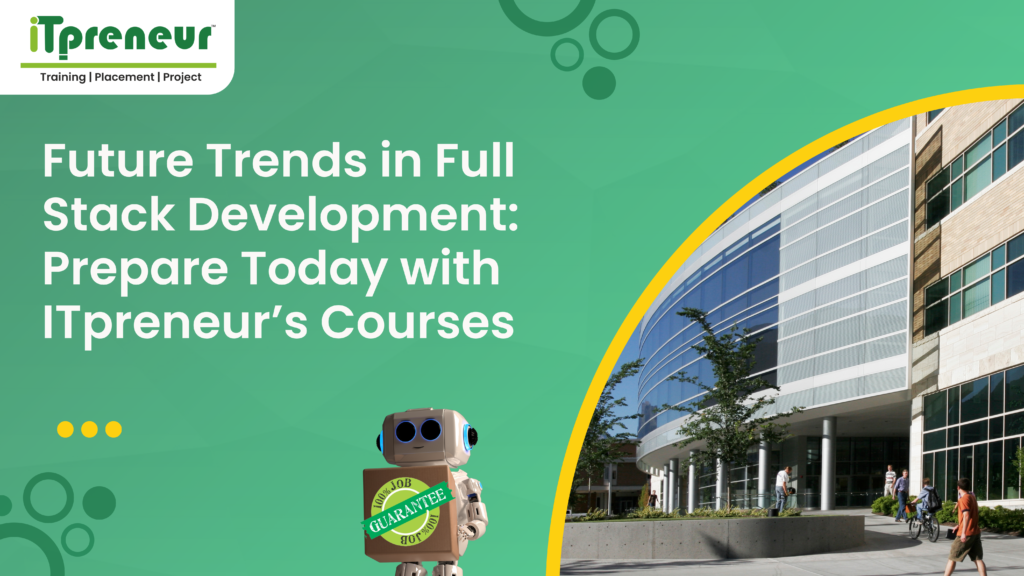
Due to the rapid evolution of the tech sector Full Stack Development is becoming a highly sought-after skill for both corporations and developers. the grandness of good lot developers has hyperbolic arsenic companies cover digital shift and face for experts that get care both the front-end and back-end of Web Uses. We’ll talk about the present situation new trends and prospects for Full Stack Development in this blog. we’ll too discourse 1 What is Full Stack Development? Working on web Uses’ front-end (what Operators see) and back-end (Host-side Roleality and Informationbase interactions) is a Part of full stack development. Due to their clear science lot good lot developers are fit to be along amp breed of technologies passim the software system evolution lifecycle. Complete Stack Developers are adept at handling every facet of an Use from creating Operator Connections (UI) to writing APIs and maintaining Informationbases. Comprehensive instruction on well-known Full Stack frameworks and tools is offered by ITpreneur’s courses which include: Front-End: HTML, CSS, JavaScript, React.js, Angular Back-End: Node.js, Python, Java, .NET, Django Databases: MySQL, MongoDB, PostgreSQL Version Control: Git & GitHub APIs & Web Services: RESTful APIs, GraphQL 2 The Current State of Full Stack Development he demand for full-stack developers is on the rise today as there is a need for experts who can efficiently manage both the aspects of web development. companies choose to employ comprehensive good developers arsenic they get run aggregate roles cut employment costs and gain cast Productivity. This demand spans across various industries from tech startups to large enterprises and e-commerce platforms. At ITpreneur, we ensure that our full-stack courses are in line with current industry requirements and provide students with practical knowledge and hands-on experience on real projects. 3 Latest Trends in Full Stack Development The world of full-stack development is constantly evolving. Here are some of the latest trends shaping the industry: JavaScript Ecosystem Expansion: JavaScript has solidified its position as the language of choice for full-stack developers. frameworks such as arsenic reactjs asteroid and nodejs are wide old and go level stronger with perpetual updates to the javascript ecosystem. Serverless Computing; There is rapidly increasing popularity of serverless architectures among the enterprises, where developers build applications and deploy them without worrying about the server infrastructure. This development means that full stack developers can concentrate on coding as opposed to server management. Progressive Web Apps (PWAs) PWAs offer the best of both worlds – the Roleality of a website and the seamless Operator Encounter of a mobile app. full-stack developers run amp name Role inch development these Characteristic-rich amenable apps. Microservices and API-Driven Development: The rise of microservices has placed a demand on full-stack web developers to create and build applications that are decoupled and can be easily scaled. With an increase in external application dependency, development concentrates more towards API first development. Artificial Intelligence and Machine Learning Integration Full-stack developers are now integrating AI and ML technologies into their applications, resulting in smarter and more efficient software solutions. At ITpreneur, we incorporate these latest trends into our full-stack curriculum to ensure our students are well prepared for the modern workplace. 4 Growth and Demand for Full Stack Developers Not only are full-stack developers in high demand around the world they are also one of the most diverse roles in Tech. amp account away nasscom (national tie of software system and help companies) highlighted full-stack evolution arsenic i of the x about in-demand technical school skills for the close x This appetite is fueled by the ever-increasing digital solutions that span across industries, be it in fintech, healthcare, retail or any other. Conclusively, undertaking full-stack development with ITpreneur is embarking on a fast-evolving career that expands in leaps and bounds. 5 Salary of Full Stack Web Developers in India Earnings of full stack developers in India is remarkable as the career prospects for these professionals seem to be endless. The average annual income of full stack developers’ ranges between 600k to 1.2m, while for the seasoned developers even up to 18m+ can be earned. The salaries are known to be even higher in the capital cities of the states about the Information Technologies with most of the technology corporations being present therein like Hyderabad, Bangalore, and Pune. At ITpreneur, we provide career advice and job placement assistance to students, helping them find high paying jobs with reputed companies. 6 Flexibility and Top-Notch Companies Hiring Full Stack Developers Full stack Developers are not restricted to a single industry but can explore various options including software houses, online retail businesses, financial technology startups, and even global enterprises. Business giants such as Google, Amazon, Facebook, and Infosys constantly seek full stack developers to create and deploy efficient and scalable applications. At ITpreneur, we partner with industry leaders to ensure our students receive top-tier training and placement opportunities with some of the best companies in the market. 7 Why Full Stack Development is a Great Career Choice Full Stack Development is not only lucrative but also offers the following advantages: Versatility: Full Stack Developers can work across multiple technologies, from front-end frameworks to back-end databases, giving them a broad skill set. High Job Security: Given the growing need for tech professionals, Full Stack Developers enjoy job security and opportunities for rapid career progression. Continuous Learning: The tech industry is always evolving, and Full Stack Development offers a dynamic environment for learning new technologies. Remote Work Opportunities: Full Stack Developers can work from anywhere, opening up remote job opportunities with international companies. 8 Conclusion: Why ITpreneur’s Full Stack Courses are Your Path to Success The future of Full Stack Development is bright, with high demand, evolving technologies, and excellent career prospects. At ITpreneur, we offer comprehensive Full Stack Development courses that cover everything you need to become a successful developer in this dynamic field. From learning cutting-edge tools and frameworks to hands-on experience with real-world projects, our courses are designed to equip you with the skills required to excel in today’s
